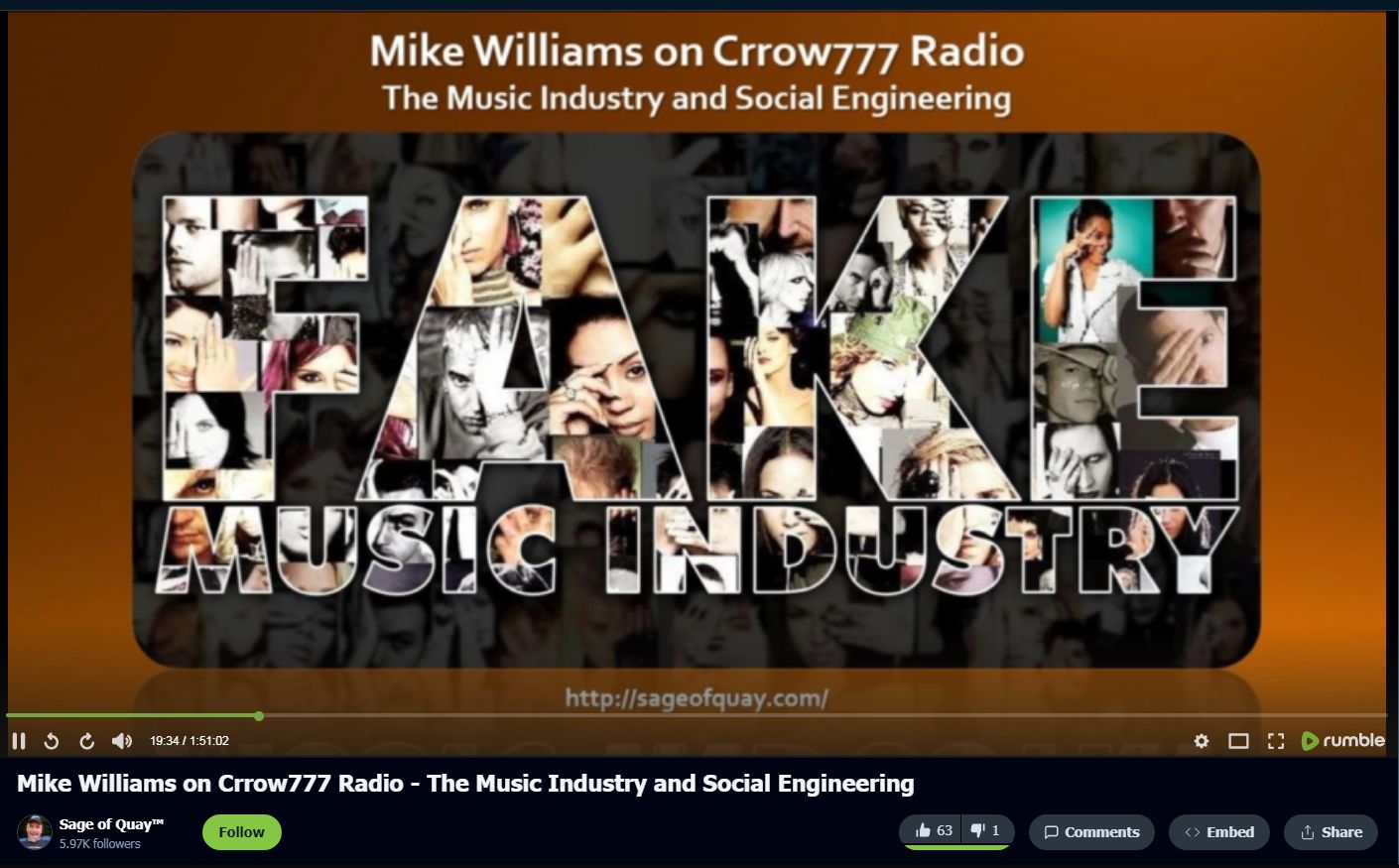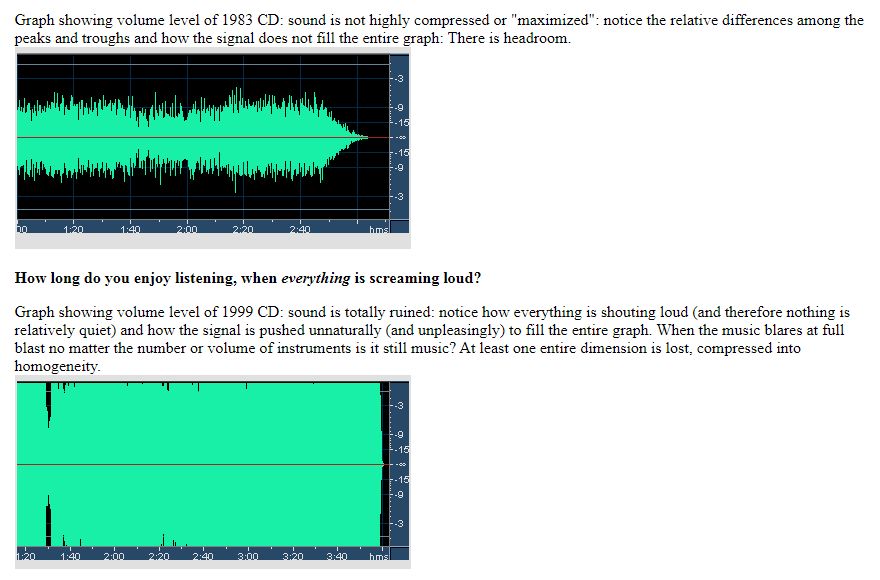The Music Industry and Social Engineering

“…[modern music] sounds like ‘a robot singing to a robot’…”
The unnatural “maximization” mentioned in a video comment was posted possibly 20 years ago and by then had already been well underway —

Musical control and culture creation are intertwined concepts that highlight the influential role of music in shaping society, culture, and individual identities. Here’s an exploration of each concept:
1. Musical Control:
– Industry Influence: The music industry, including record labels, producers, and distributors, wields significant influence over the creation, promotion, and distribution of music. These entities often exert control over artistic expression, marketing strategies, and market trends to maximize profitability and commercial success.
– Censorship and Regulation: Governments, regulatory bodies, and cultural institutions may impose censorship or regulation on music to control content deemed objectionable, offensive, or subversive. This may involve restrictions on lyrics, themes, or imagery in music, as well as limitations on public performances or distribution channels.
– Technological Advancements: Advances in technology, such as digital streaming platforms and social media, have transformed the landscape of music consumption and production, providing new avenues for artists to reach audiences while also introducing new forms of control and surveillance over content and user behavior.
2. Culture Creation:
– Expressive Medium: Music serves as a powerful medium for cultural expression, communication, and identity formation. Artists draw upon their personal experiences, cultural heritage, and social context to create music that reflects and resonates with diverse audiences.
– Social Commentary: Music has the ability to critique social norms, challenge authority, and raise awareness about pressing issues such as inequality, injustice, and political repression. Musicians often use their platform to advocate for social change and promote dialogue on important societal issues.
– Cultural Identity: Music plays a central role in shaping individual and collective identities, providing a means for people to connect with their cultural roots, heritage, and community. Musical genres, styles, and traditions are deeply embedded in cultural narratives and serve as markers of identity and belonging.
– Community Building: Music brings people together, fostering a sense of community, solidarity, and belonging among diverse individuals and groups. Concerts, festivals, and other music-related events provide opportunities for social interaction, cultural exchange, and collective celebration.
Overall, musical control and culture creation are dynamic processes shaped by a complex interplay of economic, political, technological, and social factors. While control mechanisms may seek to influence and constrain musical expression, culture creation remains a resilient and adaptive force driven by the creative endeavors of artists, communities, and audiences worldwide. By understanding the dynamics of musical control and actively engaging in culture creation, individuals and societies can contribute to the enrichment and diversity of global musical landscapes while promoting freedom of expression, artistic innovation, and cultural exchange.
Coped from the video comments —
“””
Before CPUs, ASICs/FPGAs, and software were ‘fast enough’ and ‘smart enough’ to perform tonal / pitch adjustment necessary for “autotune” / “melodyne”, it gradually became routine in the ‘mastering’ post-production phase that the dynamic range of audio intensity was ‘dynamically compressed’ and ‘maximized’ down to only 1- or 2-deciBels, versus its natural range of 20- to 40-dB.
This constituted another lost dimension in musical performance and occurred generally from the early 90s onward (though far less garish dynamic compression had been applied during the decades prior, also caused by the inherent “soft peak-crushing” of the magnetic tape (and earlier, wire) media itself). [The former ‘reduction of dynamic headroom’ was called “limiting” or “leveling”, and the latter is a natural side-effect due to natural “magnetic hysteresis”.]
The result of this maximization is that the normally quieter and quietest parts of the performance became homogenously as loud as the loudest parts: Whispers blare as powerfully as screams, which is extremely unnatural in all respects.
This technique has been increasingly applied to all pop and modern music, purportedly so that it would ‘overcome road-noise’ during moving-in-car listening and avoid the same fate as classical music (which annoyingly seems ‘always too quiet to hear or too loud to bear’ whilst listening in-moving-car).
Audio power level graphs for pop songs are essentially all now “solid bars” in histogram display, very far from the drastic peaks-and-troughs evidencing normally varying audio levels.
RE: Rap as “poetry to a beat” — Linton Kwesi Johnson expounds this; they call the genre “DUB”.
“””
Copied from the comments —
“Check out the book “Burning Down the Haus” – talks about how the East German Stasi infiltrated the punk scene and bands in order to control the revolution happening there in the 90s. I am sure our government does the same thing here today, in the “underground” scenes…
—
“Is it even possible for Joe Random to proverbially go-to Hollywood and make it big” must factor the amazing research done by Dave McGowan presented online as “Inside the LC [Laurel Canyon” and in the book, “Weird Scenes Inside the Canyon” which shows military intelligence directly involved in all major successful musical acts. All.
It also must factor in the revelations about “The Wrecking Crew”, the small group of recording studio musicians (and engineers) responsible for what is thought to be 90% of all recorded performances in all modern music.
From comments —
“Each “reset”, I think, gets “Them” something — millions of souls this time, perhaps, in addition to mRNA-modified downlines, fledgling nano-tech, and computer/networking technologies. These required millions and maybe billiosn of man-years of effort to develop; They need us, to enslave ourselves. I realized and ‘knew’ this much when I was seven years old.
“RE worshipping via cellphones around 1:06:00 in. Occultist John Dee reportedly communicated with demonica via “scrying” and “automatic writing”. Scrying was accomplished by holding a glass or silver plate above a candle flame so that the black soot deposited upon the plate. A quill or stylus was then held in-contact as communing with the aethereal was undertaken. Today, we have similar black screens and if not using an actual stylus millions of persons use their fingertips to communicate ultimately via “ethernet”.
3 important movies — 1:43:00 in
(1) THE WRECKING CREW
(2) MUSCLE SHOALS
(3) HIRED GUN